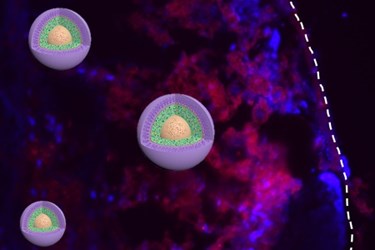For Cancer-Fighting Nanoparticles, Size Matters
By Chuck Seegert, Ph.D.

University of Illinois engineers have recently shown that nanoparticle size can have a marked effect on the effectiveness of anticancer nanomedicines.
Nanomedicine and, in particular, nanoparticle-based therapies are continually advancing in the medical device space. Smart delivery of a variety of drugs is being facilitated by nanoparticle systems, while other nanoparticle systems have been used to deliver lethal doses of radiation and energy to tumors.
As the field continues to develop, researchers will begin to have more fundamental insights that define the parameters of nanoparticle science. An example of this is embodied in this most recent work from University of Illinois Urbana-Champaign (UI) engineers. The team looked at different sized nanoparticles to identify which would be most efficient at delivering cancer therapy to tumors, according to a recent press release.
Other properties of the particles remained the same throughout the experiments, which left diameter as the only changing variable at 20 nm, 50 nm, and 200 nm. Most FDA-approved nanoparticles range from 100 nm to 200 nm, according to the press release, but this may not be optimal.
“Over the last 2-3 decades, consensus has been reached that particle size plays a pivotal role in determining their biodistribution, tumor penetration, cellular internalization, clearance from blood plasma and tissues, as well as excretion from the body—all of which impact the overall therapeutic efficacy against cancers,” stated Li Tang, Ph.D., a member of the research team at UI, in the press release. “Our studies show clear evidence that there is an optimal particle size for anti-cancer nanomedicines, resulting in the highest tumor retention.”
The most effective particle tested was the 50 nm size, because it had increased tissue penetration and cancer cell internalization, according to a study published by the team in the Proceedings of the National Academy of Sciences. This result was supported by in vivo investigations using primary and metastatic tumors, as well as a mathematical model the team developed.
“To develop next generation nanomedicines with superior anti-cancer attributes, we must understand the correlation between their physicochemical properties—specifically, particle size—and their interactions with biological systems,” said professor Jianjun Cheng, the lead researcher of the project, in the press release.
In addition to size, nanoparticles with responsive characteristics are becoming an intense area of research. Some nanoparticle systems have been designed to heat when exposed to infrared light, which can allow targeted energy delivery to tumors. Similarly, other nanoparticles have been designed to release a therapeutic payload when they are exposed to a magnetic field.
Image Credit: University of Illinois at Urbana-Champaign
